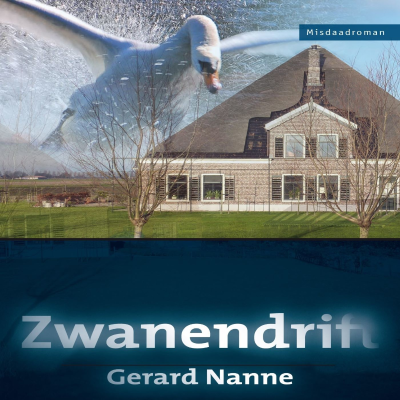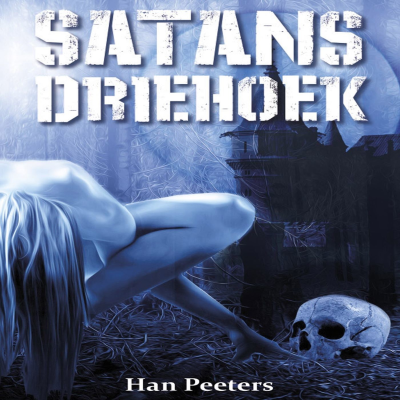
Sound Investing
Engels
Business
Tijdelijke aanbieding
1 maand voor € 1
Daarna € 9,99 / maandElk moment opzegbaar.
- 20 uur luisterboeken / maand
- Podcasts die je alleen op Podimo hoort
- Gratis podcasts
Over Sound Investing
Weekly podcasts with Paul Merriman. Strategic planning for investing at every stage of life.
Alle afleveringen
528 afleveringenAAII Q&A Series (Part 3 of 3)
Over the last couple of weeks, I’ve been recording a series of Q&As that came out of a presentation I gave in November for the American Association of Individual Investors — AAII. At the end of that nearly two-hour talk, I promised that I’d do a podcast answering every single question that came in. Well… there were 36 questions. That’s a little too much for one episode, so we broke them into three parts. This is Part 3 — the final 12 questions. If you haven’t heard Parts 1 and 2 yet, we’ll link those in the show notes so you can catch up. Before we jump in, I just want to say: I’m a huge fan of AAII. I started teaching their local chapters way back in 1984, and over the years I think I’ve presented to just about every chapter in the country — sometimes in person, sometimes by Zoom — but always to people who are genuinely committed to learning how investing works. If you’ve never checked out AAII, I’ll include a link in the notes for a low-cost trial membership. Take a look around and see if it’s a resource that fits your investing journey. Alright — let’s get to the last 12. 1. Will you develop strategies using the equal-weighted S&P 500? 01:44 2. Can you recommend advisors who follow your strategy? 07:20 3. Should I move mutual funds to ETFs in taxable accounts despite taxes? 11:26 4. With markets at highs, should I keep dollar-cost averaging or rebalance? 16:17 5. What portfolio fits 10 years to retire and 20–30 years of decumulation? 24:08 6. Will the configurator shift to only Avantis/DFA funds in 2026? 30:37 7. What does “inflation-adjusted fixed withdrawals” mean? 33:56 8. How should I invest an inheritance for kids/grandkids ages 2–45? 38:21 9. Ultimate Buy-and-Hold vs. two- or four-fund strategies — which is better? 49:03 10. Should political conditions change retirement portfolio decisions? 59:12 11. How do I find a fee-based/hourly advisor (Rhode Island question)? 1:05:56 12. Should very conservative 91-year-olds move beyond bonds and cash? 1:13:28 Part 1 of the AAII Q&A Series [https://www.paulmerriman.com/thanksgiving-aaii-q-as-retirement-portfolios-value-tilts-international-diversification-and-investing-a-lump-sum#gsc.tab=0] Part 2 of the AAII Q&A Series [https://www.paulmerriman.com/aaii-q-a-part-2-12-more-questions-answered#gsc.tab=0] AAII trial membership offer (the ~$2 first month deal) [https://invest.aaii.com/membership/] Boot Camp series hub [https://www.paulmerriman.com/bootcamp-tables-2025#gsc.tab=0] Fine-Tuning Your Asset Allocation table / lesson [https://www.paulmerriman.com/fine-tuning-your-asset-allocation-2025-update#gsc.tab=0] Sound Investing / portfolio decade return tables [https://www.paulmerriman.com/Sound-investing-portfolios-2025#gsc.tab=0] — Fixed vs. Variable Withdrawal episode/article [https://www.paulmerriman.com/2025-flexibile-distributions#gsc.tab=0] H-2A table referenced in Q9 [https://irp.cdn-website.com/6b78c197/files/uploaded/H2a-soundinvesting-1119f9ad.pdf] Chris Pedersen Boot Camp presentation (Two-Fund for Life) [https://www.paulmerriman.com/Bootcamp-8-2-funds-for-life-update-2025#gsc.tab=0]Garrett Planning Network advisor directory [https://directory.garrettplanningnetwork.com/] HelloNectarine hourly advisor platform [https://hellonectarine.com/?utm_source=google&utm_medium=cpc&utm_campaign=21010462487&utm_term=hourly%20financial%20advisor&utm_content=159160380216&gad_source=1&gad_campaignid=21010462487&gbraid=0AAAAAqqqtYZ_8A6JDYZRXyan6C_m90gmv&gclid=CjwKCAiA0eTJBhBaEiwA-Pa-hdEVNh87bTsXlmjT9Cz0KiAqizlTrZpEU3-NCMHPvjtlZ0jRyjmH1RoC73kQAvD_BwE] PlanVision / Mark Zoril reference [https://www.planvisionmn.com/who-we-are/]
AAII Q&A, Part 2 — 12 More Questions Answered
Paul continues his three-part series responding to questions from his November 8 AAII presentation. In this episode, he digs into risk-parity portfolios, the role of gold, how the 10-Fund Strategy compares to the S&P 500, growth vs. value, rebalancing discipline, and how to choose the right bond allocation in retirement. If you were at the AAII event, you’ll find the exact 12 questions listed below so you can jump straight to your topic. 12 AAII Questions Covered 1. Thoughts on risk-parity portfolios during retirement distributions? 2:12 2. Was the 10-Fund Strategy originally meant to mirror 60/40? 14:51 3. Should investors add gold (IAU) after its recent streak? 21:40 4. What is a double-rung bond ladder? 24:03 5. Which of the nine portfolios has the best return per unit of risk? 26:36 6. Analysis of growth funds outperforming over the last decade? 31:36 7. How to invest new money when the economic outlook looks uncertain? 36:40 8. Will the AAII slide deck be available? 38:54 9. How often do you rebalance? 39:25 10. How do you tune out the noise and stay the course? 41:13 11. How to choose your bond allocation in the distribution phase? 45:25 12. Can you share ETFs for the bond portion of a retirement portfolio? 52:12 Resources Mentioned AAII presentation slides [https://irp.cdn-website.com/6b78c197/files/uploaded/AAII-11-8-2025.pdf] 10-Fund vs. S&P long-term comparison [https://irp.cdn-website.com/6b78c197/files/uploaded/Table_A1a-UBH-50-50.pdf] Fine-Tuning Your Asset Allocation tables [https://www.paulmerriman.com/bootcamp-tables-2025#gsc.tab=0] Sound Investing tables [https://www.paulmerriman.com/Sound-investing-portfolios-2025#gsc.tab=0] Retirement withdrawal tables [https://irp.cdn-website.com/6b78c197/files/uploaded/%28F%29_Flexible_Distribution_Tables_%2850-50%29_-_2024_Returns.pdf] Lifetime Investment Strategy calculator [https://www.paulmerriman.com/merriman-financial-education-foundation-lifetime-investment-calculator#gsc.tab=0] Best-in-Class ETF recommendations [https://www.paulmerriman.com/Best-in-Class-ETF-Recommendations2025#gsc.tab=0]
Thanksgiving, AAII Q&As. Retirement Portfolios, Value Tilts, International Diversification, and Investing a Lump Sum
Recorded from our new home on Bainbridge Island and released on Thanksgiving, this episode is equal parts gratitude and practical investing help. I open with my annual tradition of writing a fresh Thanksgiving list—people, communities, and institutions that have shaped my life and this work. I’m especially thankful for you, the DIY investors who keep showing up to learn, ask thoughtful questions, and hopefully staying the course. I also share appreciation for the resources that support disciplined investing—Morningstar, the Bogleheads community, and the American Association of Individual Investors (AAII). After a recent AAII presentation (over 150 attendees), we ran out of time for a live Q&A. I promised to respond to every legitimate question, so this episode kicks off a multi-part series answering them in depth. Here are the first 12 AAII questions covered in today’s episode: 1. (9:42) What alterations in portfolio construction do you recommend in transition from accumulation to distribution in order to maximize diversification of uncorrelated assets, safe withdrawal rates, and spending? [https://irp.cdn-website.com/6b78c197/files/uploaded/H2a-soundinvesting-1119f9ad.pdf]Table h2a [https://irp.cdn-website.com/6b78c197/files/uploaded/H2a-soundinvesting-1119f9ad.pdf] 2. (21:21) I’m a huge fan of your U.S. two-fund portfolio. Why is diversification between large-cap growth and small-cap value so important, while diversification between VTSAX and AVUS (within the same asset class) is not? Should we diversify fund selection within the same asset class? Table K2b [https://irp.cdn-website.com/6b78c197/files/uploaded/K2b.pdf] 3. (26:49) Have you considered creating a quilt chart for the Ultimate Buy-and-Hold portfolios with a 70/30 U.S./international split? Table K1a [https://irp.cdn-website.com/6b78c197/files/uploaded/tablek1a.pdf] and H2a [https://irp.cdn-website.com/6b78c197/files/uploaded/H2a-soundinvesting-1119f9ad.pdf] and H2b [https://irp.cdn-website.com/6b78c197/files/uploaded/H2B-4cdb5a89.pdf] 4. (32:04) You appear to have avoided any mention of mid-cap. Should we be ignoring mid-cap funds? 5. (33:35) What do you think about adding alternative investments to the portfolio (for example, managed futures)? 6. (38:39) Are your recommendations for everyone, or does the game change when you have a pension for life? 7. (43:07) I was fighting with the Zoom link and arrived 25 minutes into the presentation. Will a video recording be available to participants? 8. (44:08) What would you expect the difference between the S&P 500 cap-weighted index (VFINX)and the S&P 500 equal-weighted index (VADAX) to be? 9. (49:53) The four-fund portfolios are equal-weighted across their asset classes, which results in a value tilt overall. Why weigh them equally? 10. (54:35) One might think that adding international large-cap growth and international small-cap value to the two-fund approach would improve results. Does international allocation mainly reduce volatility/drawdown length, or also increase returns? H2a [https://irp.cdn-website.com/6b78c197/files/uploaded/H2a-soundinvesting-1119f9ad.pdf] and H2b [https://irp.cdn-website.com/6b78c197/files/uploaded/H2B-4cdb5a89.pdf] 11. (56:26) Can you buy DFA and Avantis funds at Charles Schwab? 12. (58:40) What should you do if you have a lump sum to invest today, but current market highs make entry uncomfortable? https://awealthofcommonsense.com/2025/11/do-we-need-a-long-bear-market/ [https://awealthofcommonsense.com/2025/11/do-we-need-a-long-bear-market/]
Supercharge Your Retirement with Paul Merriman
Paul Merriman brings 60+ years of investing experience to the Retire Today podcast, breaking down what really determines retirement success. Most investors think it’s about picking the right fund or timing the market—but Paul says the biggest threats aren’t headlines. They’re costs and emotions. In the 1960s, investors routinely paid 8.5% to buy a mutual fund. Today fees are far lower, but the impact is still huge. Paul notes that even a 1% difference in expenses “can cost you about $3.5 million over a lifetime” because compounding works both for you and against you. Behavior can cost even more. “When the market goes down, people panic,” Paul explains. Selling in a downturn—the “I just can’t take it anymore” moment—means locking in losses and missing the recovery. His advice: don’t time the market. Build a plan you can actually stick to. When asked what separates retirees who thrive from those who struggle, Paul’s answer is simple: education. What you learn and who you learn it from shapes your decisions—and helps you stay calm when markets get rough. That’s why his nonprofit work focuses on teaching diversified, simple, low-cost strategies through guides like Sound Investing Portfolios and We’re Talking Millions! Paul once promoted a 10-fund “Ultimate Buy-and-Hold” portfolio, but even John Bogle told him it was too complex. After testing simpler versions, Paul found that two-, four-, and six-fund portfolios often matched or beat the original. You can explore these models at PaulMerriman.com/portfolios. The takeaway: simplicity makes discipline easier. We also discussed retirement withdrawals. Paul recommends a flexible approach: take a bit less after down years and a bit more when markets are strong. This can reduce stress and help your portfolio last. “If you know how long you’re likely to live and how much you have,” he says, “that knowledge gives you freedom—not fear.” If you’re approaching retirement, here’s Paul’s short list: * Diversify with low-cost index funds. Focus on the right mix, not the perfect pick. * Match risk to reality. Choose a stock/bond split you can live with in bad markets. * Use flexible withdrawals. Adjust spending based on market conditions. * Keep behavior boring. Automate rebalancing and ignore predictions. * Invest in education. Knowledge keeps emotions from running the show. You’ve worked hard to build your savings. Now build a plan that works just as hard—quietly, efficiently, and with confidence. Watch the full conversation on YouTube for more on fees, behavior, portfolio design, and practical withdrawal strategies.
AAII Presentation Follow-Up: ETF Tax Efficiency, Rebalancing, and Smarter Diversification
First, a big thank-you to everyone who joined me for the AAII presentation last Saturday. I appreciate your patience during my rocky Zoom start—and a special shout-out to Suzette Moskwa, who saved the day by running the slides! As promised, I’m following up on your chat comments and questions from the session. This week’s focus is on your insights; in the next couple of weeks, I’ll share a full Q&A edition covering listener questions on portfolio construction, diversification, and long-term investing strategy. Key Takeaways from This Week’s Discussion 1. ETFs vs. Mutual Funds — Tax Efficiency Matters Mutual funds often create higher annual taxes in taxable accounts. ETFs and index funds are more tax-efficient because of how they handle capital gains—saving investors up to 1% a year. Keep mutual funds inside IRAs to avoid unnecessary taxes. 2. Equal-Weighted vs. Cap-Weighted Portfolios The Invesco Equal Weighted S&P 500 (RSP) holds the same 500 companies as the standard index but gives each stock equal weight. This creates different exposure and more turnover, yet the ETF version reduces the tax drag—a key advantage for long-term investors. 3. Small-Cap Value Funds — Choosing the Right Fit VBR (Vanguard) performs best when large-cap growth leads, while AVUV and DFSV outperform when smaller value companies rise. The lesson: size and style matter in long-term returns. 4. The Power of Rebalancing & “Shannon’s Demon” Mentioned by Bill Yount from the Catching Up to FI podcast, Shannon’s Demon [https://portfoliocharts.com/2022/04/12/unexpected-returns-shannons-demon-the-rebalancing-bonus/ ] illustrates how periodic rebalancing can turn volatility into profit. By selling high and buying low, you can enhance long-term performance while keeping risk in check. 5. Morningstar Ratings — Don’t Chase the Stars Star ratings mostly reflect recent trends, not future potential. Focus instead on the underlying asset class and decades of evidence, not last year’s winners. 6. Small-Cap Value Slump — Patience Pays Off Small-cap value has struggled this year, but historically it offers one of the best long-term premiums. Remember: asset class selection drives up to 99% of overall portfolio performance. 7. Risk Parity Portfolios — Balancing Risk the Smart Way Paul compared traditional diversification to risk parity, which balances exposure across stocks, bonds, and commodities. He prefers government bonds over commodities since bonds generate income and often rise when stocks fall. 8. Diversifying Within an Asset Class Instead of going “all or nothing,” you can hold multiple ETFs—like AVUV and DFSV—for extra balance within a category. Just keep the lineup manageable for your brokerage or platform. 9. Factor Investing — What Really Drives Returns The strongest long-term drivers are size and value. Momentum and quality can help, but smaller, cheaper companies historically deliver the best rewards. 10. Growth Funds & Ten-Year Performance Ten-year snapshots can mislead. From 2000 to 2025, small-cap value funds far outperformed growth and the S&P 500, showing the value premium remains powerful across full market cycles. 11. S&P 500 vs. Total Market — Nearly Identical Over Time Since 1928, returns differ by only 0.1%. The S&P’s recent edge comes mainly from a handful of mega-cap tech stocks, not fundamental differences in the indexes. 12. Hiring an Advisor — When It’s Worth It A skilled fiduciary advisor can help manage emotions, discipline, and rebalancing. If you struggle to stay consistent, professional guidance may be worth far more than the fee. 13. The DIY Investor Myth — Overcoming Human Biases “No one cares more about your money than you” sounds good, but behavioral biases—recency, overconfidence, and loss aversion—can derail results. Automation or a trusted advisor can protect you. For more insight, see Paul Hayes’ free book Spending Your Way to Wealth [https://investorship.com/wp-content/uploads/2023/10/SYWTW.pdf], especially the appendix on 48 investor biases. Thank you again for your time, attention, and thoughtful participation. Despite the technical hiccups, your engagement made this an incredibly rewarding session!
Kies je abonnement
Tijdelijke aanbieding
Premium
20 uur aan luisterboeken
Podcasts die je alleen op Podimo hoort
Gratis podcasts
Elk moment opzegbaar
1 maand voor € 1
Daarna € 9,99 / maand
Premium Plus
Onbeperkt luisterboeken
Podcasts die je alleen op Podimo hoort
Gratis podcasts
Elk moment opzegbaar
Probeer 30 dagen gratis
Daarna € 11,99 / month
1 maand voor € 1. Daarna € 9,99 / maand. Elk moment opzegbaar.

































